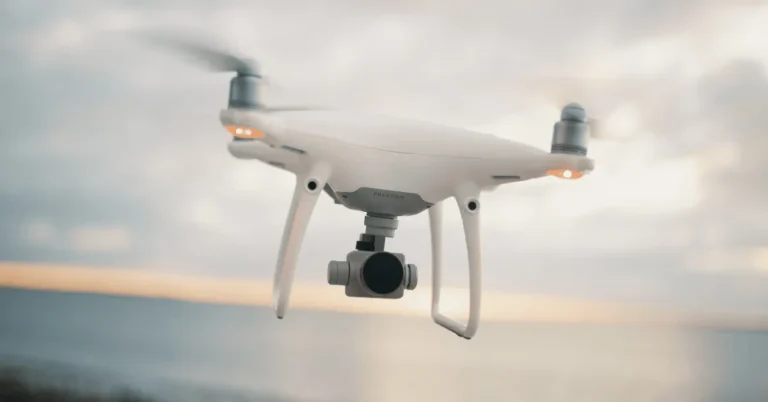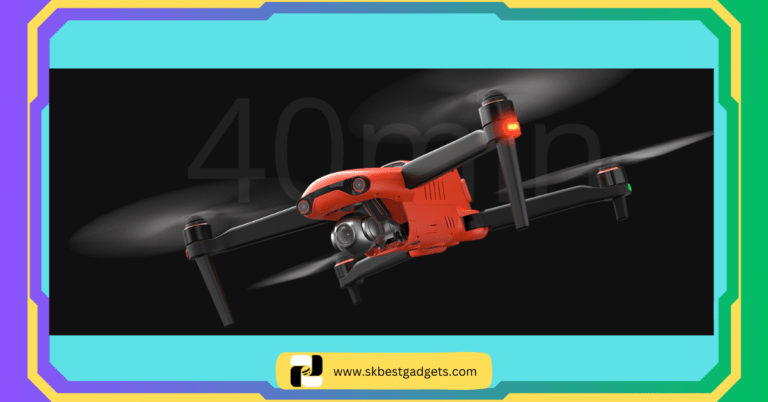Can a Drone Fly with One Propeller?

Drones, also known as unmanned aerial vehicles (UAVs), rely on sophisticated propulsion systems to achieve flight.
The fundamental mechanics of drone flight revolve around the use of multiple propellers, which are crucial for generating lift, maintaining stability, and enabling maneuverability.
These propellers are driven by electric motors, which are powered by onboard batteries. The number of propellers can vary depending on the type of drone, with the most common configurations being quadcopters (four propellers), hexacopters (six propellers), and octocopters (eight propellers).
Each propeller on a drone plays a vital role in its operation. In a quadcopter, for instance, two pairs of propellers rotate in opposite directions to counterbalance the torque generated by the motors.
This counter-rotation is essential for maintaining stability and preventing the drone from spinning uncontrollably.
Hexacopters and octocopters follow a similar principle, with additional propellers providing greater lift and redundancy.
The extra propellers in these configurations enhance the drone’s ability to remain stable and operational, even if one or more propellers fail.
Propellers are also instrumental in controlling the drone’s direction and altitude. By varying the speed of individual propellers, the drone can pitch, roll, and yaw, allowing it to move forward, backward, sideways, or rotate in place.
For instance, increasing the speed of the front propellers while decreasing the speed of the rear ones will tilt the drone forward, causing it to move in that direction.
Similarly, adjusting the speed of the left and right propellers enables lateral movement. Altitude control is achieved by uniformly increasing or decreasing the speed of all propellers, thereby generating more or less lift.
In summary, the propulsion system of a drone is a complex yet elegantly designed mechanism that relies on the coordinated effort of multiple propellers.
Each propeller’s contribution is indispensable for ensuring stable flight, precise control, and overall effectiveness of the drone, making the question of whether a drone can fly with one propeller highly pertinent and intriguing.
Wondering if ND filters are right for your drone footage? Check out our guide on Should I Use ND Lens Filters When Shooting Drone Video? for the inside scoop!
The Role of Each Propeller in Flight
In the intricate dance of multi-rotor drones, each propeller plays a crucial role in ensuring the machine’s ability to fly, maneuver, and maintain stability.
Typically, a drone features four, six, or eight propellers, each contributing to the generation of thrust and balance.
The fundamental principle behind a multi-rotor drone’s flight is the creation of lift through the rapid rotation of its propellers. Each propeller generates an upward force, counteracting the drone’s weight and enabling it to ascend.
A key concept in drone flight is torque, which is the rotational force produced by each propeller. If all propellers were to spin in the same direction, the resultant torque would cause the drone to spin uncontrollably around its vertical axis.
To counteract this, drones are designed with propellers that spin in opposing directions. For instance, in a quadcopter, two propellers spin clockwise while the other two spin counterclockwise.
This arrangement balances the torque, ensuring the drone remains stable and does not rotate unnecessarily.
The flight controller is the brain of the drone, responsible for managing the propulsion system. It continuously adjusts the speed of individual propellers to achieve the desired movements.
By increasing or decreasing the RPM (revolutions per minute) of specific propellers, the flight controller can make the drone ascend, descend, or perform complex maneuvers.
For example, to ascend, all propellers need to spin faster to generate more lift. Conversely, to descend, the propellers slow down, reducing the lift and allowing gravity to pull the drone downward.
Turning, or yawing, is another critical aspect of drone flight. By varying the speed of propellers spinning in opposite directions, the flight controller can induce a controlled rotation around the drone’s vertical axis.
This precise manipulation of propeller speed ensures that the drone can turn smoothly without losing stability.
The synchronized operation of propellers, managed by the flight controller, is what enables a multi-rotor drone to perform a wide range of aerial maneuvers with precision and stability.
Wondering how to choose the right ND filter for your drone? We’ve got you covered!
Consequences of Losing a Propeller
Losing a propeller during drone flight has significant adverse effects on the aircraft’s stability and control. A drone’s flight dynamics heavily rely on the synchronized operation of its propellers.
When one propeller ceases to function, the delicate balance of forces that keep the drone aloft is disrupted, often leading to a rapid loss of control. This imbalance can cause the drone to spin uncontrollably or descend erratically, culminating in a crash.
The degree to which a drone can handle the loss of a propeller varies depending on its design. For instance, a quadcopter, which has four propellers, is highly vulnerable to such a failure.
The absence of one propeller in a quadcopter compromises its ability to maintain even lift and thrust distribution, resulting in immediate instability.
Conversely, an octocopter, equipped with eight propellers, may demonstrate a greater degree of resilience.
In this scenario, the remaining seven propellers can, to some extent, compensate for the lost propeller, providing a possibility of controlled descent or limited maneuverability.
Advanced drones, particularly those used in professional or industrial applications, often incorporate sophisticated fail-safes and algorithms designed to mitigate the impact of losing a propeller.
These systems can dynamically adjust the thrust of the remaining propellers to counteract the imbalance.
However, it is important to note that such technology is not typically found in consumer-grade drones.
For the majority of hobbyist and recreational drones, the loss of a single propeller almost invariably leads to catastrophic failure.
In summary, while some advanced drones may possess mechanisms to manage the loss of a propeller, the typical consumer drone is not equipped to handle such an event.
The result is often an abrupt and uncontrolled descent, emphasizing the critical importance of maintaining all propellers in optimal condition for safe flight operations.
Wondering if your store-bought drone qualifies for DJI Care Refresh? Look no further! [Can People Get DJI Care Refresh on a Store-Bought Drone?]
Technological Advances and Potential Solutions
In recent years, the field of drone technology has seen remarkable advancements aimed at enhancing safety and reliability, particularly when it comes to managing propeller failure.
One of the most significant innovations is the development of redundant propulsion systems. These systems ensure that even if one or more propellers fail, the drone can still maintain controlled flight.
This redundancy is crucial for applications where safety is paramount, such as in commercial deliveries and search-and-rescue operations.
Advanced flight controllers have also become a pivotal element in modern drone design. These controllers are equipped with sophisticated algorithms that can dynamically redistribute power to the remaining functional propellers, thereby stabilizing the drone.
Coupled with AI-driven stabilization algorithms, these systems can quickly adapt to changes in flight dynamics, making it possible to mitigate the effects of a propeller failure.
Ongoing research and development in the field are continually pushing the boundaries of what is possible. For example, engineers are exploring the use of machine learning to predict and prevent propeller failures before they occur.
This proactive approach could revolutionize drone safety by addressing issues even before they become critical.
Additionally, there are developments in materials science aimed at creating more durable and resilient propeller designs, further reducing the likelihood of failure.
Several cutting-edge drones exemplify these technological advancements. Models like the DJI Matrice 300 RTK and the Skydio 2 leverage redundant systems and advanced AI to handle propeller loss more effectively than traditional designs. These drones are setting new standards for reliability and safety in the industry.
Looking ahead, the future of drone technology seems promising. To make single-propeller flight feasible, it will likely require a combination of breakthroughs in propulsion systems, real-time data analytics, and AI-driven flight management.
The continuous evolution of these technologies not only enhances the overall safety of drones but also opens up new possibilities for their use in various sectors.
Intrigued by the capabilities of radar to detect drones? Dive deeper in our article: Can Radar Detect Small Drones? Exploring the Capabilities and Limitations.







